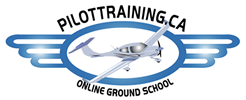Finding the right flying school

As kids we usually had no choice of where we went to school. We attended the school in our neighborhood—unless, of course, you’re younger than I and were subjected to busing. For many flight students the choice of school is also based on what’s in the neighborhood, and there is a lot to be said for a flight school that’s convenient.
Unless you are planning to attend a school on a full-time basis—in which case you might actually move to the school’s location—the more easily you can get to a school, the more easily you’ll be able to work your flight lessons around the rest of your schedule.
Finding a flight school should be easy. You could let your fingers do the walking and try the yellow pages or the internet, but eventually, a drive out to your local airport is the best way to see what schools are available and what they have to offer.
Just walking into the fixed base operator’s (FBO’s) lobby should give you some idea of how professionally the school is run. In the past, flight schools weren’t too good about making potential students feel welcome.
Flight schools range in size from a freelance instructor conducting lessons in his own airplane to professional academies and university departments with platoons of instructors and fleets of airplanes. Which size is best really depends on the student—and the instructor.
Another choice that some students have is whether to take their lessons over an extended period or to concentrate their instruction during a dedicated block of time. There are advantages to both methods. Choosing a school for full-time instruction is similar to selecting a college. You’ll want to consider the “campus” and the services available to the residential students since you could be spending a considerable amount of time there. A full-time program is more efficient in terms of the actual learning time, but will cost more because of living and travel expenses. If you are taking flying lessons to become a professional pilot, then a full-time school that offers job placement help and an opportunity to sign on as an instructor after graduation to build time is important.
For the most rapid progress, instructors usually suggest that students try to schedule a lesson at least once a week. Inclement weather and other scheduling difficulties may stretch the time between lessons but it helps not to let too much time pass between trips aloft.
After you have chosen a school, don’t feel you’re stuck with your decision. You can always transfer. Any flight time that you’ve logged counts toward the certificate even if you change schools. If you have already soloed before you switch schools, however, your new instructor will have to assure himself that you are competent to fly safely before he will be able to sign you off again to solo.
Even if you don’t change schools, it can occasionally be helpful for both you and your instructor if you fly with another instructor for an independent evaluation of your progress. Larger flight schools require their students to complete a phase or stage check at specific times during their training. The stage checks are conducted by the school’s chief flight instructor or other senior instructor to evaluate both the student’s progress and as a quality check on the instruction given.
Don’t be misled by unrealistic estimates about how long it will take and how much it will cost to complete your training. Very few students complete all the requirements for their certificate in the minimum time. Don’t expect that you will. If you do, so much the better, but be sure the school isn’t low-balling the price and time just to get you signed up.
Some full-time schools require that students pay all or at least half the cost of training up front. Is the money refundable if you decide to withdraw? Is there a penalty for withdrawing early? Many schools offer discounts if you pay for a block of flight time in advance. In most cases the money can be used for flight training or flight supplies. Before you put any money on account, find out exactly how you can use the money and whether it’s refundable. A good rule is not to prepay until you have some experience with the school.
The best way to find out about a school is to ask current and past students. The school should be willing to give you the names of recent graduates, and current students are often found in the lounge before or after their lessons. Have they had problems scheduling airplanes? Have maintenance problems been dealt with quickly and properly? Are the airplanes available at the scheduled lesson time?
You also might want to consider whether the school is located on a busy airport with a control tower or at an uncontrolled field. There are advantages to both. Taking lessons at an airport with a tower provides useful practice and exposure to air traffic control operations. But a busy airport will also result in delays—both on the ground and in the air. An uncontrolled field will allow more flight time per lesson but may cause a student some anxiety later when faced with a busy terminal area and controlled airport. A school based on a uncontrolled airport near a controlled airport can be the best of both worlds.
